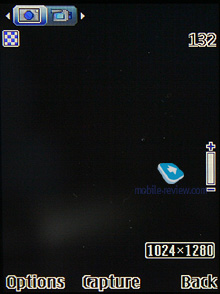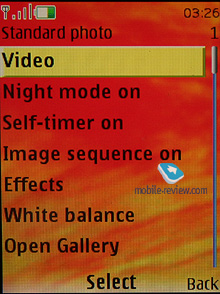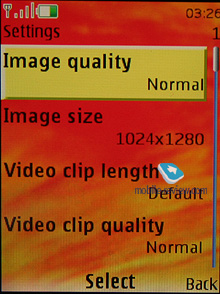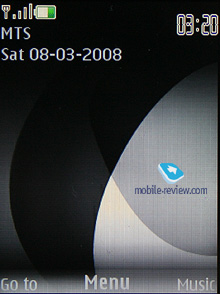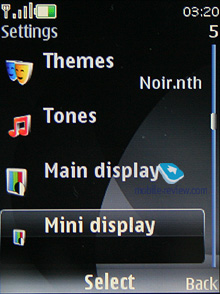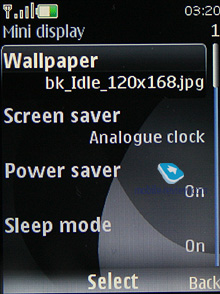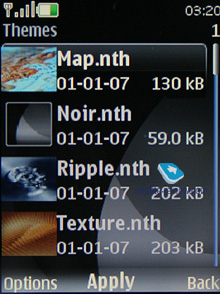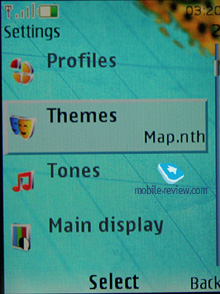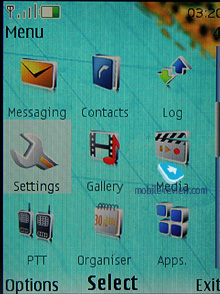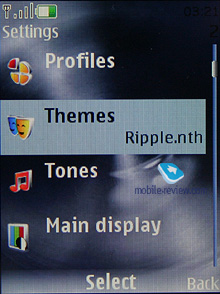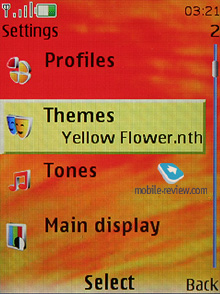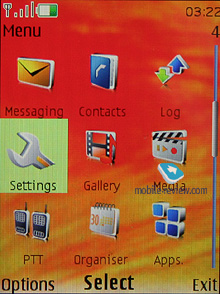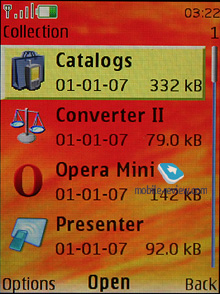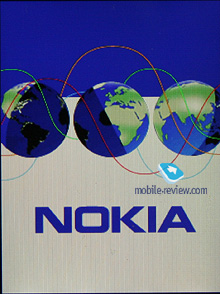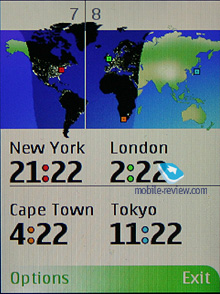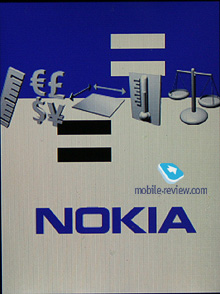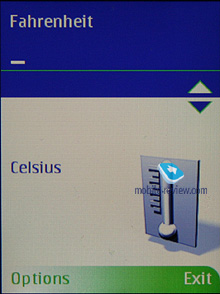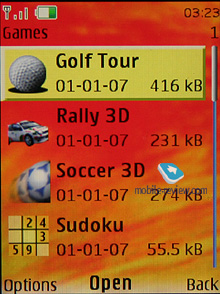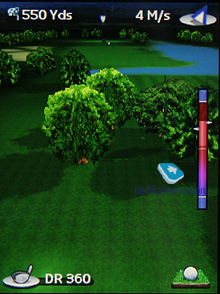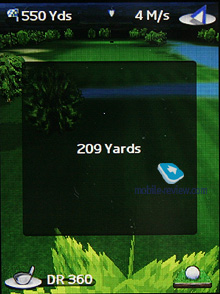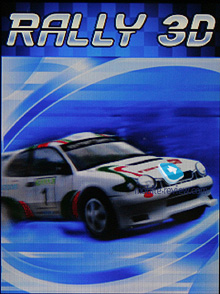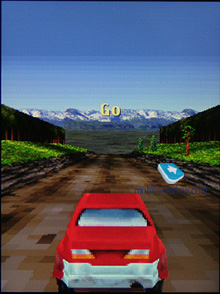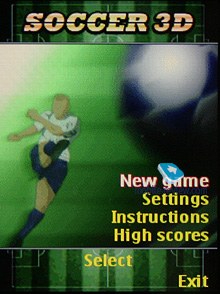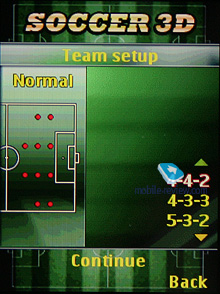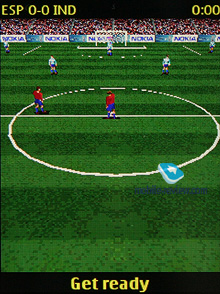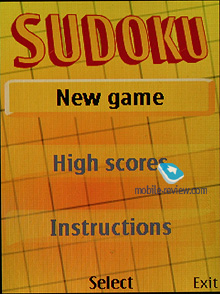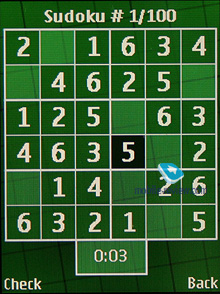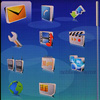|
|
Review of GSM/UMTS-handset Nokia 6555
Table of contents:
- Positioning
- Design, size, controls
- Display
- Keypad
- Memory
- Battery
- Camera
- USB, Bluetooth
- Performance
- Themes, applications, games
- Impressions
Sales package:
- Handset
- 1020 mAh battery (BL-5C)
- Charger (AC-4)
- User Guide
- Wired stereo-headset (HS-47, availability varies by region)
Positioning
The Nokia 6555 walks exactly the same road as the Nokia N80. But how are they connected, I hear our conscious readers, who would never confuse an NSeries smartphone with a no-frills S40-powered folder, ask. The fact of the matter is that the backgrounds of these two handsets bear an uncanny resemblance. Both were originally designed for the US market, premiered on it, and then went on to become available in other regions. Generally, it is a rare instance when Nokia manages to come up with a device created exclusively for some particular region without it ending up available on other markets later on. But the story of the Nokia 6555 is even more twisted. This handset was originally designed for AT&T as an affordable mid-tier offering; on top of that they had to meet the following conditions stipulated by the carrier: it had to revolve around the price point of LG-branded phones and it had to be a 3G-enabled clamshell packing in more (or just as much) punch than Motorola’s and Samsung’s solutions. Initially the carrier thought this model would settle down in its portfolio for a long while, and arrive with the price tag of 130-150 USD (with a contract, of course). Nokia took this task with all seriousness, as a deal with AT&T gave them a chance to hop back into the US market. Not only did they decide to arm it with a powerful feature set, but they also added some visual appeal to it with a fancy design. However, they are no magicians and that’s why this affordable handset was decked out in fitting materials, whereas its design was inspired by a more expensive phone. So the resulting mix was quite something: relatively cheap plastic fused with an appealing design and folder mechanism, which is called “smooth-back” by the way.

As it usually happens, everything thought that AT&T would love this phone so much that it would sell in droves. But when the 6555’s sales kicked off in September 2007, the company ran into a short surge of sales, which then went on a downswing. What was the reason for such a dramatic change in the consumers’ minds? In many ways it happened due to the phone’s positioning, as it was touted as a solution for high-speed connection to AT&T network, music and video downloads from the carrier’s own store and so on. Given all this, the 6555 retailed for around 100 USD (the users could get a 50 dollar return via mail) on a 24 month contract. For comparison’s sake: phones (although without the much-hyped 3G) that were viewed similar or even identical by prospective buyers were available on similar contacts with AT&T for free. That’s why the carrier couldn’t afford to buy up hundreds of thousands phones, while as far as Nokia is concerned, production of less than a million units of one particular model is out of the question for the economy of scale reasons. Mind that we are talking about mass-market handsets, as some phones actually are churned out in small quantities. So, getting back to our story, the finale takes no rocket scientist to predict – AT&T’s “exclusive offering”, without much fuss, debuted in other regions.

Had Nokia been planning to launch this phone somewhere else from the word go? It doesn’t really matter now, since it has already happened and the 6555 is now effectively available around the globe. It shouldn’t be viewed as a key offering or some sort of a mass-market product in spite of its positioning. This phone’s life span won’t be too long; therefore it will flash on the horizon and vanish right off. Even unofficial supplies from the US came to a halt shortly after the 6555’s release – nobody was that deep in love with its design to shell out 400-450 USD for it. Incidentally, the Nokia 6131 is almost an exact replica of the 6555, yet packs an older version of the S40, which consumers will never recognize anyway. It has stood the test of time and is currently enjoying great sales at its price point of 220 USD. You want something more? Then look no further, the Nokia 6267 ships with a 2 Mpix camera, music keys embedded in the top flip, all this for 300 USD. So common sense should hint that the Nokia 6555 will go for 250-300 USD, occupying a slim niche between the Nokia 6131 and the Nokia 6267.
Back to the table of contents >>>
Design, size, controls
The 6555’s unique feature that the maker highlights is the angle between the halves when the phone is open – its close 180 degrees and what is more, the halves nearly join together with no sharp edges in sight. This design is dubbed “smooth-back”, hinting at the smoothness of the surface. But is this treat all that unique and unparalleled? By no means – the Philips 855 was the first phone to adopt it, plus there were some Samsung-branded solutions and a handful of handsets from other manufacturers. The 6555’s hinge is no engineering marvel, nor is it more or less reliable than other solutions out three.
Philips 855:

Nokia 6555:

The 6555 combines two materials, including the glossy plastic used for the rounded inset running through the handset’s front fascia and rear place. The handset comes in a choice of three colors: black, brown and red, which change only the trim of the framing. In fact, that’s a common trick utilized in other models as well.

The glossy finish of the 6555 is quite a fingerprint-magnet, however hands and face grease and smudge aren’t that discernible on it, which somewhat saves it face. Inside the clamshell is black matte plastic, no sign of the soft-touch coating, though. While it is quite cheap, it still looks pretty good. I do think this sort of plastic is acceptable here, although with time it will get covered with whitish spots in the places where you touched it more often.





The buttons housed on the left-hand spine are put on the top flip, so that when you flick the 6555 open, they end up above the hinge, which makes them fiddly to tap. Also sitting here is the volume rocker along with the camera button that works even with the handset closed. Regrettably, the 6555’s outer display is of no use little use as far as phone management goes, so will always have to snap the phone open to play with its features. Other Nokia-branded models, on the other hand, allow viewing missed calls, for example, right on the external screen.

The left flank also features the microUSB socket, while the opposite side has the 2.5mm audio jack and charger socket (2mm) embedded.

The 6555’s build quality is pretty solid, although we noticed that the back cover was slightly loose and creaks while holding the phone in the hand, but generally it won’t bother you much. The phone is palm-friendly and easy to flip open at 99.6x44.3x19.6 mm and 97 grams.


Back to the table of contents >>>
Display
The outer display shows up to 262 K colors (TFT) at a resolution of 128x160 pixels. For the most part it serves two purposes – showcasing a neat-looking screensaver with an analog clock and showing the caller's picture or video ID. In all other instances it is idle or has only a small portion of its real estate used. It is somewhat readable in the sun; however it does get extremely washed out to the extent when all colors pale. It is not particularly bright, but even as it is, this display does the job of notifying you of incoming calls.

The display inside is a QVGA unit (240x320 pixels, 2-inch diagonal, 31x41 mm), capable of showing up to 16 million colors (TFT), which are all bright and vibrant. Sadly, there is no way to adjust this display’s brightness from the settings menu, meaning that it is always evenly lit in order to save some power. The display benefits from the mirrored underlayer, making for better legibility in the sun – you won’t have a hard time trying to make out what’s written on it.
The display accommodates up to 8 text and 3 service lines. The font is pretty big and certainly readable; it can be altered for some modes.
Back to the table of contents >>>
Keypad
The buttons are average size-wise, yet convenient to tap and more importantly soft – together, all this makes for a very gratifying experience of texting and dialing with it. The four-way navigation key is flanked by soft-keys and shortcuts. All keys are lit in white, which is well-visible in various environments.




Back to the table of contents >>>
Memory
The microSD memory expansion slot (cards up to 8 GB are supported) is perched underneath the battery. The handset also comes equipped with 31 Mb of built-in memory.

Back to the table of contents >>>
Battery
The 6555 utilizes a 1020 mAh Li-Ion battery (BL-5C), rated for 300 hours of standby and 6.5 hours of talk time. In Moscow it lasted around 3 days with 3 hours of calls and up to 5 hours of music. It takes the Nokia 6555 around 2 hours to charge up.

We managed to squeeze 11 hours 20 minutes (in earphones) of music in one non-stop session.
On balance, in terms of battery life this is one of the best performers out there – those who only make calls with their phones will be happy to know that the 6555 can give them 3 to 5 days of battery time (it all comes down to how much time you spend on the phone), which is a phenomenal figure against the backdrop of contemporary feature-rich solutions that can stay online 2 days at best.
Back to the table of contents >>>
Camera
This handset has a 1.3 mpx camera (CMOS) which is not that much by today’s standards, but it is still pretty much sufficient for a mid-tier offering. Unlike some solutions that come armed with 2 Mpix cameras, Nokia has decided not to bet on the camera part in the Nokia 6555, it is more of an optional feature here. This is why camera’s module picked for 6555 is one of the cheapest units out there, and provides pretty poor quality.

The following resolutions are supported:
- 1024x1280;
- 960x1280;
- 480x640;
- 240x320;
- 120x160.
Two lower resolutions were added for creating photos that would fit as wallpapers for display (outer/inner). Three JPEG compression types are supported: basic, normal, high. Considering the fact that photos do not blow your imagination away, it is better to go for the top quality, it won’t get any worse after all.
The shutter sound can be disabled, also there is a 8x digital zoom, but there is no reason to use it. You can save photos in the internal memory or on the memory card.
The shutter sound can be disabled, also there is a 8x digital zoom, but there is no reason to use it. You can save photos in the internal memory or on the memory card.
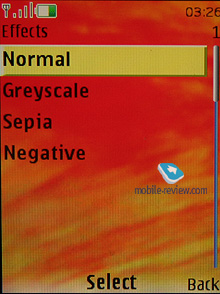
When shooting indoors, the matrix seems to lack sensitivity – darker objects get blurred with green stains, this goes especially for backgrounds. Turning the night mode on saves the day, yet the colors get dim.
For those who love to shoot a lot of photos at once, there is special mode for you – the camera makes up to 3 shots at a time, all settings remain similar to those selected for the single shot mode, including the resolution. There is an auto-timer for self-shots , however due to the fact the camera starts up when the handset is closed (the outer display doubles as a viewfinder), it won’t be very helpful.
Below you will find snaps taken in various environments – I guess no further comments are required, as you can make a conclusion on your own (maximum resolution, best quality).
 |
 |
| (+) maximize, 1024õ1280, JPEG |
(+) maximize, 1024õ1280, JPEG |
 |
 |
| (+) maximize, 1024õ1280, JPEG |
(+) maximize, 1024õ1280, JPEG |
 |
 |
| (+) maximize, 1024õ1280, JPEG |
(+) maximize, 1024õ1280, JPEG |
 |
 |
| (+) maximize, 1024õ1280, JPEG |
(+) maximize, 1024õ1280, JPEG |
 |
 |
| (+) maximize, 1024õ1280, JPEG |
(+) maximize, 1024õ1280, JPEG |
 |
 |
| (+) maximize, 1024õ1280, JPEG |
(+) maximize, 1024õ1280, JPEG |
 |
 |
| (+) maximize, 1024õ1280, JPEG |
(+) maximize, 1024õ1280, JPEG |
Video. The handset allows recording video in 3GP format, available resolution – 128x96 pixels, or 176x144 pixels. There are three recording quality settings available. You can limit a recording’s length, but it also can be unlimited, so you will keep capturing videos until the memory runs out (memory card or internal storage). Effects can be applied for video just as they can be applied for still images, they are all the same. The quality of the 6555’s videos is pretty mediocre, although we didn’t expect bells and whistles from it on this front.
Video sample - High, 176x144 pixels (3gp, 172 kb) >>>
Back to the table of contents >>>
USB, Bluetooth
USB. The Nokia 6555 comes with the microUSB socket, housed on the left edge of the phone. This socket is used for plugging in a data cable (the phone starts doesn’t start charging up, though). The vendor says the handset supports USB 2.0, and it does indeed, in the USB Mass Storage mode the USB connection offers 500-600 Kb/s (topping out at 800 Kb/s). This is slower than the Motorola RAZR2 V8, which also comes installed with the microUSB-socket.
Upon successful connection you can pick one of the following modes: USB Mass Storage, Nokia Mode (PC Studio) or Printing&Media. There is no support for MTP mode, music tracks have to be moved onto the phone manually.
Bluetooth. The handset comes with EDR-enabled Bluetooth 2.0. The following profiles are supported:
- Dial-Up Networking Profile
- Generic Access Profile
- Generic Object Exchange Profile
- Object Push Profile
- Serial Port Profile
- Handsfree Profile
- Headset Profile
- Synchronization Profile
- Basic Image Profile
- File Transfer Profile
- HID (host) Profile
- Stereo Advanced Audio Distribution Profile
- Advanced Audio/Video Remote Conference Profile
The Bluetooth implementation is, as always, nothing to complain about, we encountered no issues with handling this type of connections. The stereo-headset also worked fine.
Back to the table of contents >>>
Performance
The phone is a typical offering for its generation – no bells and whistles here. Compared to Sony Ericsson’s solutions, the 6555 is quite a mediocre performer.

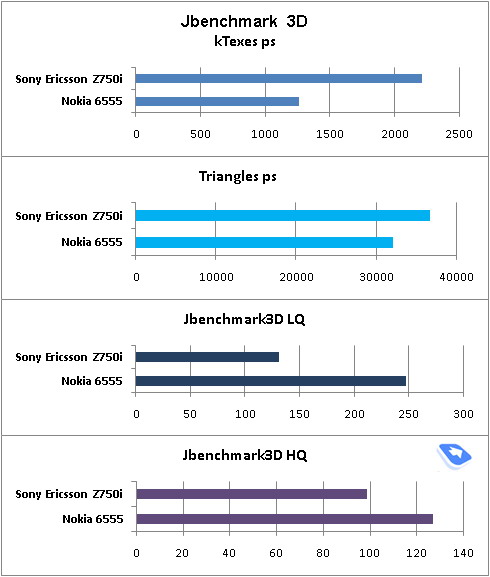
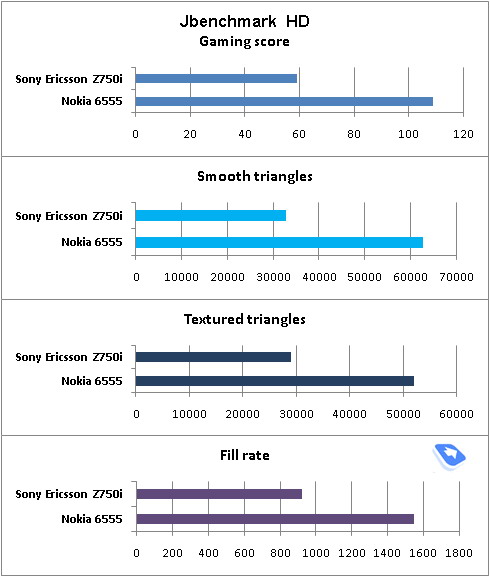
Back to the table of contents >>>
Themes, applications, games
The handset boasts a number of themes that substantially vary its looks, seem to be well-elaborated, meshing with the handset’s overall image.
The handset comes preinstalled with an array of games – Golf Tour, Rally 3D, Sudoku, Soccer 3D.
The Applications section includes such standard functions like World Clock, Opera Mini, Converter, Yahoo! Go. Some markets may also see other applications installed on the 6555. New Java applications can be uploaded over the air or directly into the handset’s memory (no size limits).
Back to the table of contents >>>
Impressions
The volume of the 6555’s polyphony is high enough to make sure you will hear it in various environments. While it sounds a tad muffled as opposed to phones enjoying two speakers, the Nokia 6555 is still loud enough. The reception quality was never an issue with the handset either. The vibro alert is average strength-wise, but it does the job even if the phone is stuffed inside a pocket.
The 6555 has no direct competition, for its price/quality ratio leaves much to be desired. It is rather a niche solution for those who will fall for its fancy design and neat clock on the front. The phone has no crucial drawbacks and nor does it pack in any bells and whistles. The bottom line on the 6555 is this: an entry-level solution that, due to certain circumstances, retails for not-so-entry-level money. With its price tag of 250-280 USD it can’t stand up even to Nokia’s own products, like the 6131 and the 6267. By the way, the Nokia 6555 doesn’t come packaged with a headset or memory card, which will set back the end-user even more. All up, if you are not keen on its looks, then there is no particular reason why you should go for it.
SAR – 0.88 W/kg.
Related links:
Back to the table of contents >>>
Eldar Murtazin (eldar@mobile-review.com)
Translated by Oleg Kononosov (oleg.kononosov@mobile-review.com)
Published — 18 March 2008
Have something to add?! Write us... eldar@mobile-review.com
|
News:
[ 31-07 16:21 ]Sir Jony Ive: Apple Isn't In It For The Money
[ 31-07 13:34 ]Video: Nokia Designer Interviews
[ 31-07 13:10 ]RIM To Layoff 3,000 More Employees
[ 30-07 20:59 ]Video: iPhone 5 Housing Shown Off
[ 30-07 19:12 ]Android Fortunes Decline In U.S.
[ 25-07 16:18 ]Why Apple Is Suing Samsung?
[ 25-07 15:53 ]A Few Choice Quotes About Apple ... By Samsung
[ 23-07 20:25 ]Russian iOS Hacker Calls It A Day
[ 23-07 17:40 ]Video: It's Still Not Out, But Galaxy Note 10.1 Gets An Ad
[ 19-07 19:10 ]Another Loss For Nokia: $1 Billion Down In Q2
[ 19-07 17:22 ]British Judge Orders Apple To Run Ads Saying Samsung Did Not Copy Them
[ 19-07 16:57 ]iPhone 5 To Feature Nano-SIM Cards
[ 18-07 14:20 ]What The iPad Could Have Looked Like ...
[ 18-07 13:25 ]App Store Hack Is Still Going Strong Despite Apple's Best Efforts
[ 13-07 12:34 ]Infographic: The (Hypothetical) Sale Of RIM
[ 13-07 11:10 ]Video: iPhone Hacker Makes In-App Purchases Free
[ 12-07 19:50 ]iPhone 5 Images Leak Again
[ 12-07 17:51 ]Android Takes 50%+ Of U.S. And Europe
[ 11-07 16:02 ]Apple Involved In 60% Of Patent Suits
[ 11-07 13:14 ]Video: Kindle Fire Gets A Jelly Bean
Subscribe
|



























